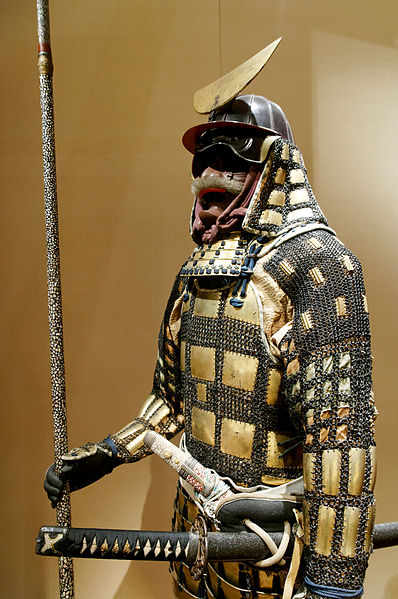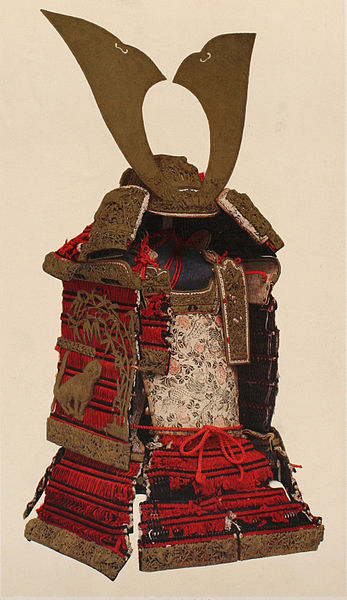Tatami (畳具足), or tatami gusoku, was a type of lightweight portable folding Japanese armour worn during the feudal era of Japan by the samurai class and their foot soldiers (ashigaru). The Tatami dō or the tatami katabira were the main components of a full suit of tatami armour.
Edo period karuta tatami dō gusoku. A lightweight portable folding (tatami) armour made from small square or rectangle armor plates called karuta. The karuta are usually connected to each other by chainmail and sewn to a cloth backing, Met Museum New York.
Edo period samurai folding suit of armor tatami gusoku completely matched set with karuta tatami dō and chochin kabuto
Edo period samurai karuta tatami dō in the hara-ate style
Karuta katabira
Scholars agree that Japanese armour first appeared in the 4th century, with the discovery of the cuirass and basic helmets in graves. During the Heian period (794-1185), the unique Japanese samurai armour ō-yoroi and dō-maru appeared. The Japanese cuirass evolved into the more familiar style of body armour worn by the samurai known as the dou or dō, with the use of leather straps (nerigawa), and lacquer for weatherproofing. Leather and/or iron scales were also used to construct samurai armours, with leather and eventually silk lace used to connect the individual scales (kozane) of these cuirasses.
Ō-yoroi, Kamakura period, 13th-14th century, National Treasure, Kasuga Grand Shrine.
Dō-maru, Muromachi period, 15th century, Important Cultural Property, Tokyo National Museum
Gusoku Armour from the Kii Tokugawa Family. Edo period, 17th century. Minneapolis Institute of Art. In 2009, it sold for $602,500, the highest bid in Christie's history for a Japanese armour.
Gusoku Armour with a medieval revival style. Cloud dragon is drawn using maki-e technique. Edo period, 19th century, Tokyo Fuji Art Museum








